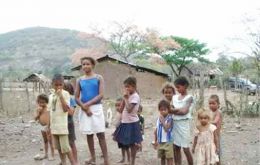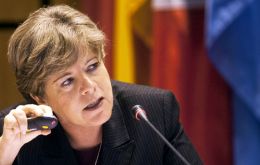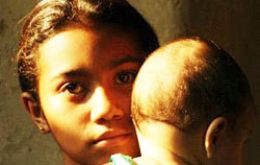MercoPress. South Atlantic News Agency
Tag: United Nations Economic Commission for Latin America and the Caribbean (ECLAC)
-
Tuesday, January 27th 2015 - 06:18 UTC
Poverty reduction in Latin America stalls during 2014: totals 167 million

Poverty affected 28% of Latin America’s population in 2014, revealing that its decline has stalled at around that level since 2012, while indigence rose to 12.0% from 11.3% during the same two-year period in an overall context of economic deceleration, according to projections from a study presented On Monday by the Economic Commission for Latin America and the Caribbean (ECLAC) in Santiago, Chile.
-
Wednesday, November 26th 2014 - 09:41 UTC
Pacific Alliance and Mercosur represent 90% of Latam and Caribbean GDP

The Pacific Alliance (PA) and the Common Market of the South (Mercosur) combined represent more than 80% of regional foreign trade as well as population, and more than 90% of GDP and direct foreign investment flows, according to a new report by the Economic Commission for Latin America and the Caribbean (ECLAC).
-
Saturday, November 15th 2014 - 08:20 UTC
Almost 30% of teenagers (15 to 19) are mothers in Latin America

Nearly 30 % of young women in Latin America are mothers before they reach 20 years and the majority of them are underprivileged, which fosters the reproduction of poverty, hinders women's autonomy and their life projects, and underscores the need for public sex education and reproductive health services.
-
Saturday, May 31st 2014 - 06:08 UTC
Uruguay's FDI equivalent to 5% of GDP and mostly in alternative energies, said Eclac report

Foreign direct investment in Uruguay totaled 2.79bn dollars last year, which is slightly higher than the 2.68bn of 2012, equivalent to 5% of GDP, according to the latest report on FDI for the region from the UN Economic Commission for Latin America and the Caribbean.
-
Wednesday, April 30th 2014 - 09:14 UTC
Latam and Caribbean forecasted to expand 2.7% on average this year

Latin American and Caribbean countries are estimated to grow an average 2.7% in 2014 as the region's main economies have limited dynamism according to ECLAC's Updated Economic Review of Latam and the Caribbean 2013, released on Tuesday.
-
Tuesday, May 14th 2013 - 23:04 UTC
Record FDI year confirms Latam as commodities supplier but with little technology input

Latin America and the Caribbean received last year a record 173.361 billion dollars in foreign direct investment (FDI) (6.7% more than in 2011), despite an international context characterized by shrinking FDI flows worldwide, according to the United Nations Economic Commission for Latin America and the Caribbean (ECLAC).
